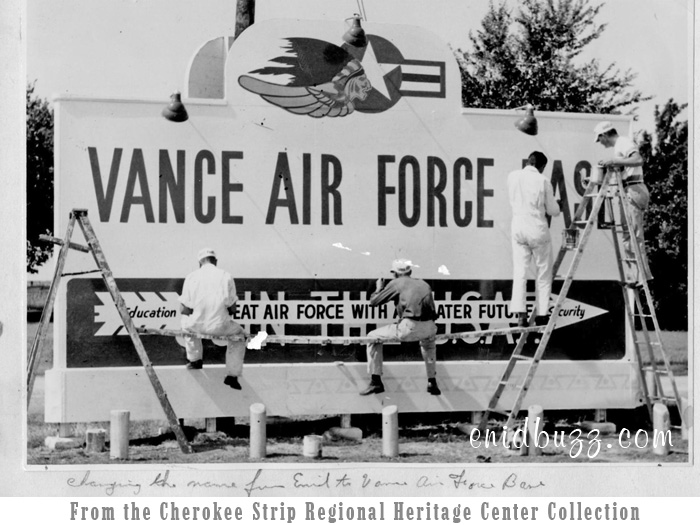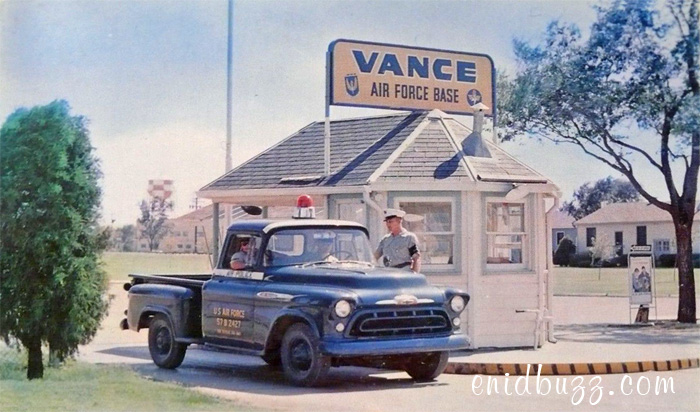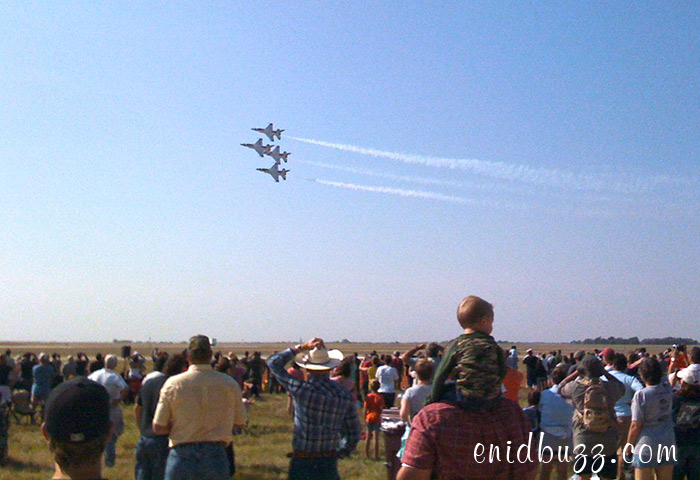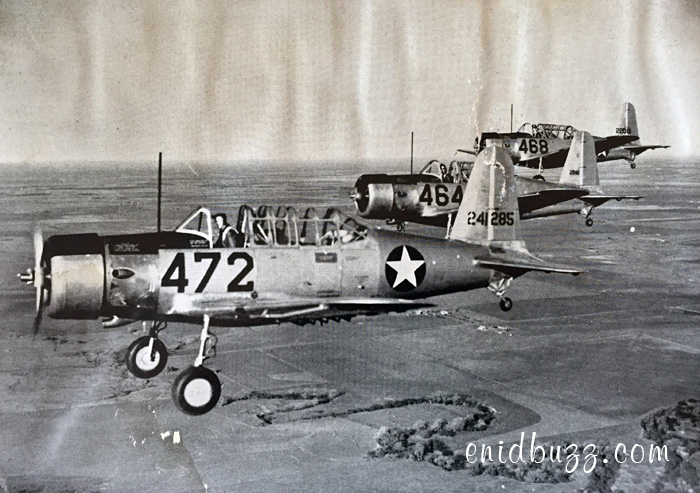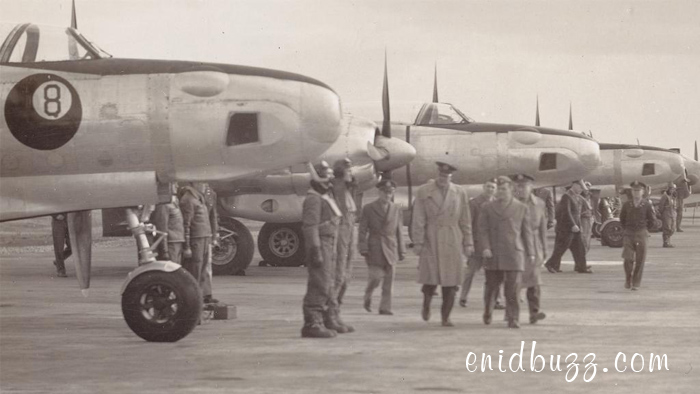ENID, OK - Construction on Vance Air Force Base began on July 12, 1941. In late November 1941, the Army officially established the installation as the US Army Air Corps Flying School Enid.
-
In March 1941, Congress provided funding for 20 new flying fields including one near Enid, Oklahoma, to train more than 50,000 pilots a year. 800 permanent party personnel from Randolph Field in San Antonio came to Enid to make the base ready for the first class of aviation cadets.
-
The first class of aviation cadets (Class 42-D), consisting of 63 members from Sikeston, Missouri. The first aircraft used was the BT-13A, later supplemented by the BT-15. These were the only aircraft used for basic pilot training during World War II. In 1944 advanced students were graduated in the TB-25 and TB-26.
-
After World War II, the Enid Army Flying Field (as it was named in 1943) closed Jan. 31, 1947. It didn't stay closed long, as the base was reactivated, and its name changed to Enid AFB on Jan. 13, 1948, as one of the pilot training bases within Air Training Command.
-
On July 9, 1949, the base was renamed after a local World War II hero and Medal of Honor winner, Lt. Colonel Leon Robert Vance Jr.
-
In 1960 Vance was selected by the Air Force as part of an extended experiment in contract services. The contractor began to perform aircraft and base maintenance, ground transportation, fire protection, procurement, supply, photographic and other services. All military training, academic instruction and flying training continues, however, under military supervision.
-
The current operations squadrons that fall under the 71st Flying Training Wing are the 71st Operations Support Squadron, the 3rd Fighter Training Squadron, the 8th Flying Training Squadron, the 25th Flying Training Squadron, the 32nd Flying Training Squadron, and the 33rd Flying Training Squadron. A reserve unit, the 5th Flying Training Squadron, augments all phases of flying training by providing qualified instructor pilots to the other flying squadrons.
